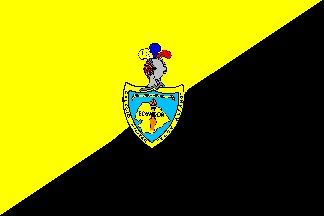
image by Dov Gutterman, 6 August 2002

Last modified: 2015-01-23 by zoltán horváth
Keywords: ecuador |
Links: FOTW homepage |
search |
disclaimer and copyright |
write us |
mirrors
See also:
See also:

image by Dov Gutterman, 6 August 2002
Based on <www.comil.edu.ec>.
Dov Gutterman, 6 August 2002
On 7 July 1838, President of the Republic Vicente Rocafuerte
(1783-1847, President in 1834-1839) founded in Quito a military
college. Close and reopened in the next decades by different
presidents, the college was eventually reestablished on 11
December 1899 by General Eloy Alfaro (1842-1912, President in
1897-1901 and 1906-1911), considered as the modernizer of the
Ecuadorian army. In 1937, President Federico Páez (1876-1974,
President in 1935-1937) added "Eloy Alfaro" to the name
of the college.
The flag of the institute, according to a photo
available on the website of the institute showing it flying
together with a red triangular flag, is diagonally divided
yellow-black by the ascending diagonal, with the emblem of the
institute in the middle.
Yellow represents the constancy, brightness and resource of the
spirit of the cadets.
Black represents sobriety, definition and modesty in their acts.
The emblem
of the institute [3] is made of a light blue shield, representing
the limpid, still and optimist sky, with a yellow map of Ecuador
inscribed with the name of the country in black capital letters
and charged with a hand holding the torch of science, truth and
culture. A yellow scroll bears the motto of the institute in
black letters, "SOLO VENCIENDOTE VENCERAS". The shield
has a yellow border bearing the name of the institute in black
letters. The shield is surmounted by a helmet argent with a red
grid and three feathers in the national colours, yellow, blue and
red.
Ivan Sache, 8 February 2009
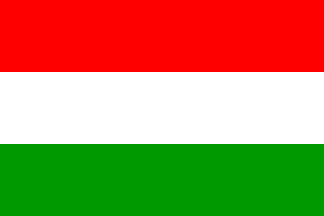
image by Ivan Sache, 10 July 2014
Colegio Nacional Abelardo Moncayo was established in Atuntaqui, capital of
the Antonio Ante Canton (est. 12 February 1938) by Ministerial Decree No. 69 of
10 December 1940. The institute is named for the writer, educationalist and
politician Abelardo Moncayo Jijón (1847-1917). Member of the Society of Jesus
from 1863 to 1871, Moncayo was one of the re-founders of the National Library,
which had been partially destroyed in 1859 by an earthquake. Moncayo was among
the perpetrators of the assassination of President García Moreno on 6 August
1875; retired for several years in his estate, Moncayo joined in 1895 the
Liberal troops. Eloy Alfaro appointed him Governor of the Imbabura Province,
and, subsequently, Chancellor of the Republic. He presided the Constituent
Assembly that named Eloy Alfaro President of the Republic. Moncayo presided in
1908, together with Eloy Alfaro, the inauguration of railway in Quito.
http://www.enciclopediadelecuador.com/temasOpt.php?Ind=1454&Let= (Detailed
biography)
The flag of the institute is horizontally divided
red-white-green. White is a symbol of purity.
http://www.colegioamoncayo.edu.ec/simbolos.php - Institute's website
Ivan Sache, 10 July 2014
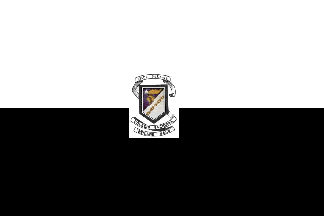
image by Dov Gutterman, 6 August 2002
Based on <www.municipalidadcuenca.gov.ec>.
Dov Gutterman, 6 August 2002
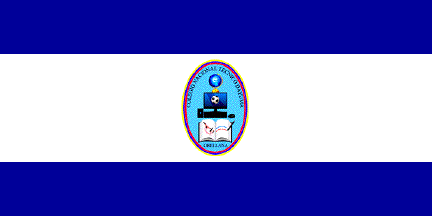
image by Ivan Sache, 12 November 2014
Colegio Nacional Técnico Dayuma is located in Dayuma Parish (Orellana Canton,
Orellana Province).
The flag of the institute is horizontally divided blue-white-blue (1:2:1) with
the institute's emblem in the middle.
Source:
http://www.colegiodayuma.edu.ec/index.php?option=com_content&view=article&id=27&Itemid=154
- Institute's website
Ivan Sache, 12 November 2014
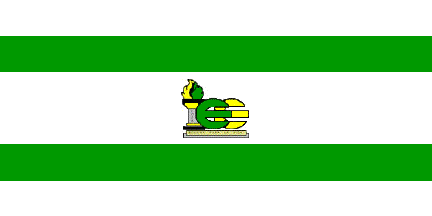
image by Ivan Sache, 8 November 2010
Colegio Particular Eugenio Espejo (CPEE), located in Loja, was founded on 14
July 1995 by Decree No. 2525 of the Ministry of Education and Culture. The
institute is named for the scientist, polemicist and lawyer Eugenio Espejo
(1747-1795), considered as Quito's first journalist and hygienist and one of the
inspirers of the Quito separatist movement (from the Spanish rule).
The flag of CPEE, as shown graphically on the institute's website, is
horizontally divided white-green-white-green-white (1:1:2:1:1) with the emblem
of the institute in the middle.
The emblem of CPEE is made of a yellow and green torch, with "LOJA" written
vertically on the hilt, flanked on right by the letters "e e", overlapping,
green and yellow, respectively, the whole placed on a
stand charged with the writing "EDUCAR PARA LA VIDA" (To educate for life").
Source:
http://www.cpee.edu.ec/simbolos.html
Ivan Sache, 8 November 2010
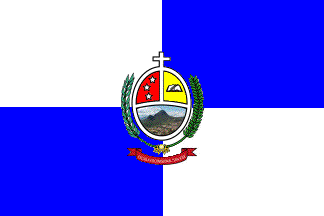
image by Ivan Sache, 07 November 2011
"Escuela Fiscocomisional 'San José'", ran by the Loja Bishopric, was founded
in 1960 in Cariamanga, the capital of Calvas Canton, Loja Province.
The flag of "Escuela Fiscocomisional 'San José'", as shown graphically on the
institute's website, is quartered white and blue with the institute's emblem in
the middle. The emblem of "Escuela Fiscocomisional 'San José'" is made of an
oval shield surmounted by a cross and surrounded by branches tied under the
shield. A red scroll bears the name of the institute in white letters. The upper
left quarter of the shield is red with three white stars recalling the flag of
Loja?). The upper right quarter is yellow with a white open book and a quill
(recalling Calvas?). The lower part of the shield shows the same landscape as on
the arms of Calvas. The two-peaked mountain is Mount Ahuaca (2,740 m), the home
of the viscacha _Lagidium ahuacaense_, found there in 2009 and counting only a
few dozen of individuals (Ledesma et al., 2009, Zootaxon 2126, 41-57).
Source:
Institute's website
Ivan Sache, 07 November 2011
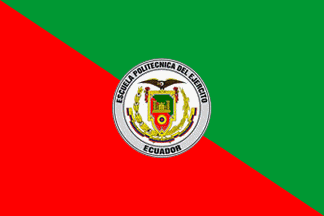
image by Eugene Ipavec, 4 May 2007
The Escuela Politécnica del Ejército (Polytechnic School of
the Army) is located in Quito and was originally established for
the education of Engineer Officers in the Ecuadorian Army. It
then evolved into the Ecuadorian Military Academy but since 1977
it has transformed itself into a standard civilian
university with a full range of civil as well as military career
opportunities. The university logo can be seen at <www.espe.edu.ec>;
it seems strange that an institution with such military
antecedents does not possess a flag or standard. However, I found
something on a Spanish web site, <www.dara.es>, which
may well be the university flag even though the site refers to it
as a shield. On the university's own home page the logo is simply
placed on a white background, but on this Spanish site it is
centered on an oyster colored rectangular background. It looks
like a flag, the institution ought to have a flag, but they have
not responded to my queries and therefore all that I can do is to
refer to this image as a possible flag.
Ron Lahav, 4 May 2007
It does have a flag: <www.espe.edu.ec>,
the little one on the podium (better visible in some of the other
photos). Red/green diagonal with emblem in center.
Eugene Ipavec, 4 May 2007
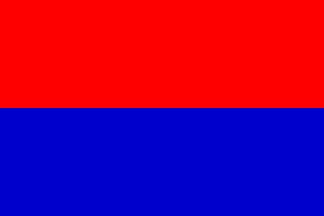
image by Ivan Sache, 26 July 2011
Escuela Politécnica Nacional (EPN) was founded on 27 August 1869 by President
García Moreno. The German provincial Superior of the Society of Jesus
commissioned three Jesuit scientists to start the institute: the German Juan
Bautista Menten, first Dean and founder of the Quito Astronomical Observatory,
the German Teodoro Wolf, founder of the Mineralogy Museum, and the Italian Luis
Sodiro, founder of the Botanical Museum and Garden. EPN was closed on 15
September 1876 by President Borrero, mostly for political reasons.
EPN was reformed on 28 February 1935 by President Velasco Ibarra as Instituto
Superior Politécnico. The today's name of the institute was established on 4
June 1946 by Velasco Ibarra. EPN, located in the central eastern part of
Quito, on the "José Rubén Orellana Ricaurte" campus, is divided into the
Faculties of Science, Administration Science, Civil and Environmental
Engineering, Electric and Electronic Engineering, Geology and Oil, Mechanic
Engineering, Chemical Engineering and Agroindustry, Systems Engineering,
Technologists' Training School and Basic Training.
Source: http://www.epn.edu.ec/ - Official
website
The flag of EPN is described on the official website as horizontally divided
red-dark blue. Red represents triumph while blue represents science;
accordingly, the flag represents the triumph of science. The same colors are
used in the coat of arms of EPN, dark blue for the field and red for the chief.
The symbols were adopted in 1958 following a public contest whose results have
been lost; accordingly, the name of the designer of the symbols is unknown.
Source:
http://www.epn.edu.ec/index.php?option=com_content&view=category&layout=blog&id=387&Itemid=54
Ivan Sache, 26 July 2011
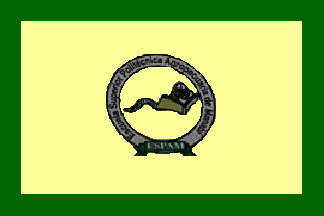
image by Ivan Sache, 2 June 2004
The flag of the Polytechnic Agricultural Superior College is
beige with a dark green border and the emblem of the College in
the middle. The flagstaff shall be of coffee colour. Green stands
for the agricultural wealth of the city of Calceta and the canton
of Bolivar, as well as for hope. Beige stands for hospitality,
work and solidarity expressed by the inhabitants of the region.
The emblem of the College shows an earthworm, which is born in
earth, feed from earth, converts earth into humus and eventually
feeds earth. The earthworm wears an orange sombrero and reads a
book. It is inscribed in a double circle in which is written the
name of the college. The acronym ESPAM is written on a green
ribbon placed below the circles.
Note that the space between the two circles should probably be
beige, too. Unfortunately, I have not been able to find a better
image of the reading earthworm emblem.
Source: Escuela
Superior Politécnica Agropecuaria de Manabí
Ivan Sache, 2 June 2004
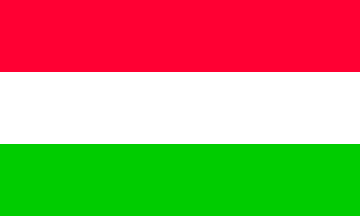
image by Eugene Ipavec, 11 April 2005
.gif)
coat of arms
image by Eugene Ipavec, 11 April 2005
ESPOCH - Escuela Superior Politecnica de Chimborazo
(Chimborazo Higher Technical College) is located in Riobamba. The college flag (tricolor of
red-white-green) can be seen at <www.espoch.edu.ec>.
Ron Lahav and Eugene Ipavec, 11 April 2005
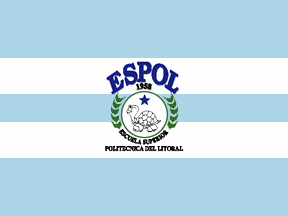
image by Eugene Ipavec, 4 May 2007
The Escuela Superior Politécnica del Litoral (Higher
Polytechnic College of the Littoral) is located in Guayaquil. The
university flag can be seen at <www.espol.edu.ec>.
Ron Lahav, 4 May 2007
ESPOL was founded by Executive Decree No. 1664, published in
the Ecuadorian official gazette on 11 November 1958. Classes
officially started on 25 May 1959. In March 2002, the institute
catered more than 12,000 students taught by more than 800
professors and 500 other employees.
Article 5 of the new statutes of ESPOL, adopted in 1998, says:
"Escuela Superior Politécnica del Litoral shall use the
patriotic symbols of Guayaquil and its own symbols as well. Its
motto is "Ciencia, Tecnología y Educación al servicio del
país" [Science, Technology and Education to the service of
the country] and its acronym is ESPOL."
Flag - The Polytechnical Council approved on 14 December 1993 the
report presented by Robert Toledo Echeverría, Vice Rector in
charge of Students' Affairs and Welfare, and prescribed the flag
of ESPOL to be: A rectangular field with three light blue
("celestes") and two white stripes.
The upper and lower light blue stripes shall be twice higher than
the light blue central stripe.
The white stripes shall be slightly ("ligeramente")
higher than the light blue stripe they flank. In the middle of
the flag shall be placed an allegory made of a circle charged
with a "galápago", below it the words "Guayaquil -
Ecuador". [The "galápago" is the Galápagos
(giant) tortoise, Geochelone nigra Quoy & Gaimard, a
species endemic to the Galápagos islands, with ten subspecies
still alive (out of the 12 recorded). More details at wikipedia].
Above the circle shall be placed the acronym ESPOL, below the
circle shall be placed "Octuber de 1958" [October
1958], the foundation date of the institute.
Below the circle shall be written the name of the institute
"Escuela Superior Politécnica del Litoral".
The circle shall be surrounded by olive branches, symbols of
knowledge, peace and excellence.
Below the lower writing shall be placed a white star symbolizing
the Guayaquil Star [this seems to
have been changed for a light blue star placed in the upper part
of the circle].
The flag of the institute shall be used in all the official acts
of ESPOL.
Emblem - The emblem / seal of ESPOL was created in 1958 by the
founder and first Director of the institute, Walter Camacho
Navarro. The seal was oval, charged with a laurel crown
surrounding the Guayaquil Star.
Outside the oval were written "Escuela Superior Politécnica
del Litoral" and "1958". Used for the first 15
years of existence of the institute, until Rector Luis Parodi
Valverde decided that the emblem of the institute should be more
closely related to Ecuador. In 1974, without any official
decision, a donkey's head was added to the emblem, which was
nothing but original, since this is the symbol used by the
National Polytechnic Institute of México.
Accordingly, the Board of ESPOL launched a competition for
designing the emblem of the institute. On 25 November 1974, the
Board approved the proposal made by Carlos Quevedo Flores, which
includes a "galápago", the world famous symbol of the
Galápagos islands, and, therefore, of Ecuador.
Source: <www.espol.edu.ec>.
Ivan Sache, 12 April 2009